FORT BENNING, Ga. (Feb. 19, 2010) - Basic training is designed to teach Army recruits the basic skills of a Soldier. The nine-week course pits them against both physical and mental obstacles and gives them the self-confidence to become the Army\'s future leaders. But for family members, friends and future recruits, what happens in basic training can feel like a mystery. In our nine-week series, we will follow the transition from civilian to Soldier of basic training recruits with C Company, 2nd Battalion, 47th Infantry Regiment, 192nd Infantry Brigade.
Week One:
"I don't get much sleep and it's cold everyday," said PVT Chris Bettinger, of C Company, 2nd Battalion, 47th Infantry Regiment, 192nd Infantry Brigade. "The dude next to me snores like a train so I've got to wake him up periodically so I can get back to sleep."
Bettinger is one of more than 240 trainees in their first week of Army life.
Basic training consists of nine weeks broken into three, three-week phases - called Red Phase, White Phase and Blue Phase. After spending a few days at the 30th Adjutant General's Battalion (Reception) completing paperwork and being issued uniforms, the C Company recruits began basic training Feb. 9.
Bettinger, of Birmingham, Ala., joined the Army to become a combat medic - a skill he said he hopes will translate into a meaningful civilian job if he chooses to get out of the Army following his four-year commitment.
"(Basic training) is not that bad," he said. "I miss my family but still it's fun and people say it gets better as it goes on. I'm looking forward to each day to see what happens."
PV2 Robert Gilbert, who signed on to be an avionic and survivability equipment repairman, said not knowing what will happen each day is both exciting and nerve-wracking.
"It's the unknown, I don't know what to expect at all," said Gilbert, of Belpre, Ohio. "They tell us on a need-to-know basis but I'm a person who likes to have a set schedule for everything."
The adjustments Bettinger, Gilbert and the rest of the C Company recruits are going through are typical at this point, said SFC Jeffrey Althouse, a senior drill sergeant with the company.
"There is hesitation; they're scared and in a new environment," he said. "Plus, they're intermingling with 59 other guys in a living space. There's a culture shock. They are learning whether the stories they've heard about basic training are true or not."
Althouse has been a drill sergeant with the company for more than a year and has seen several cycles of Soldiers complete training and head off to their first duty stations.
"We aren't here to destroy anybody or beat the crap out of them," Althouse said. "We are here to facilitate these kids becoming men. They learn not only Army stuff but to take responsibility for their actions, whether good, bad or indifferent."
CPT Ryan Oliver, commander of C Company, said the most important thing the cadre try to impart to the new recruits in the first week is the importance of working together.
"Each guy in a platoon came from somewhere different so they have different views and experiences," Oliver said. "They may have preconceived notions, so the first few weeks are about making sure they pay attention to detail and start working as a team."
To meet this goal, the first week is filled with team-building exercises. In the first few days, the Soldiers complete two-mile and four-mile road marches, their first physical fitness test, a confidence course and an obstacle course. The Soldiers also learn the basics of communication, the seven Army values, drill and ceremonies and basic rifle marksmanship. To further bolster team building, each platoon, which is made up of approximately 60 Soldiers, shares a living space commonly called a bay. Each bay contains 30 sets of bunk beds, 60 wall lockers for personal effects and a large bathroom called a latrine.
While most of Fort Benning enjoyed a four-day holiday, with a snow day thrown in, C Company was out training. The Soldiers were introduced to the M16 rifle and learned to assemble and disassemble it and to clean it properly. Saturday, the Soldiers were at the Warrior Marksmanship Skills Trainer on Sand Hill learning how to hold and aim their weapons at targets on a large video screen. Althouse said the Soldiers would be qualifying on the M16 by the end of the third week or beginning of the fourth.
In the second week, the Soldiers head to the Eagle Tower confidence course and get an introduction to hand-to-hand combat.
The Soldiers graduate April 15.


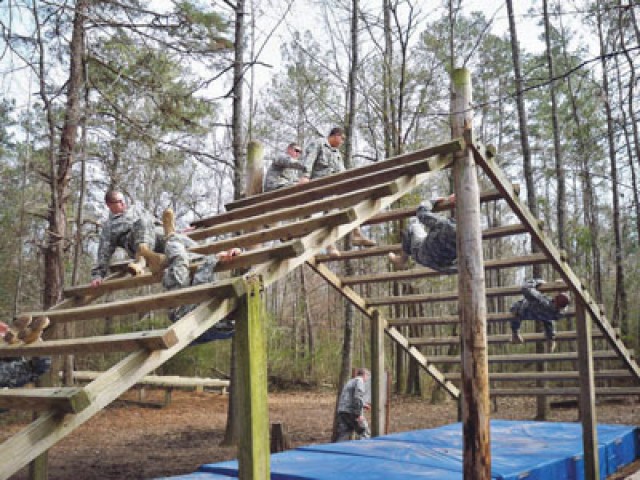
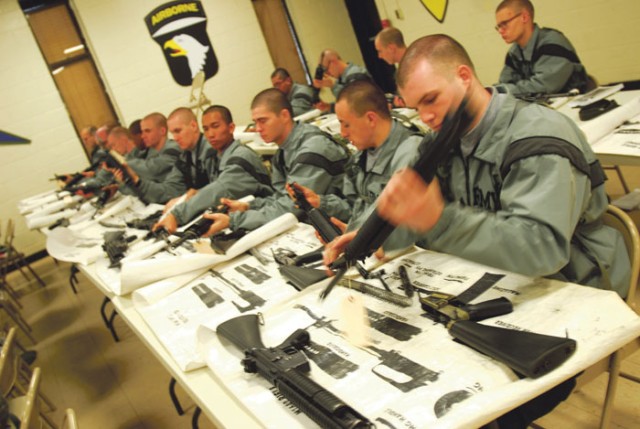

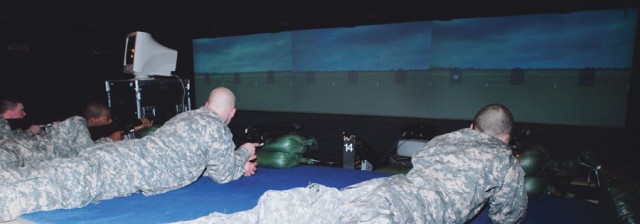
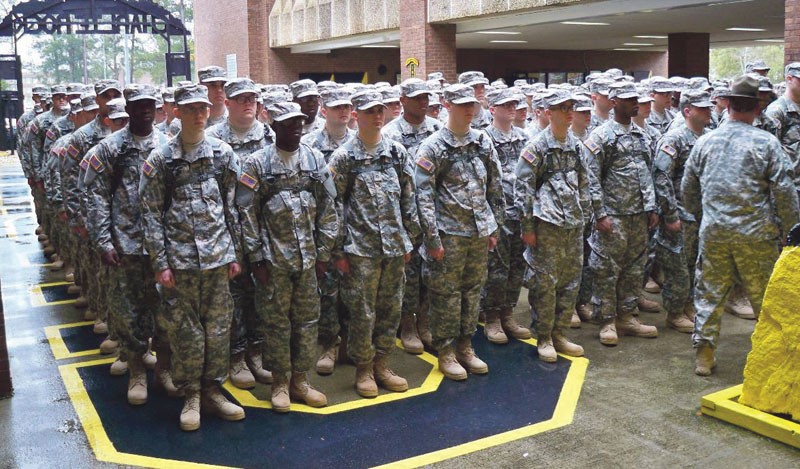
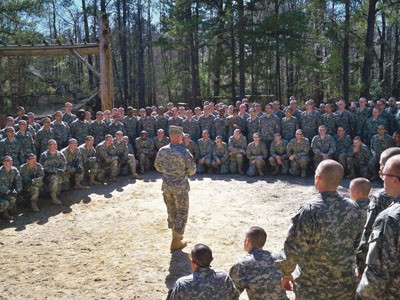

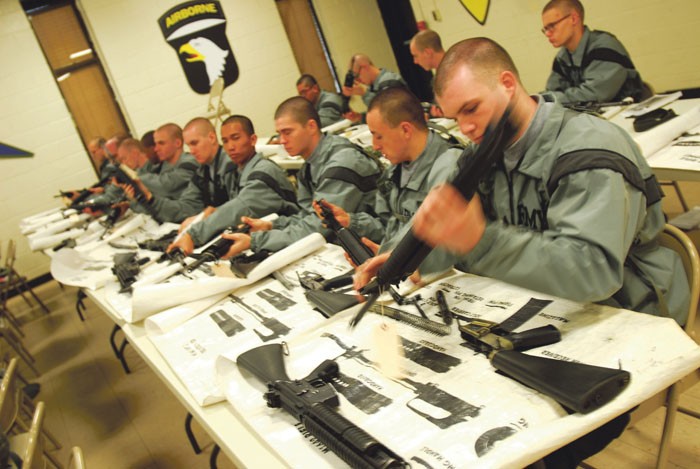


Social Sharing